Hlane Royal National Park is the quintessential park in Eswatini. It is the largest park in the country with about 30,000 hectares. Formerly the park had served as the king’s private hunting ground until King Mswati III protected it.The park is currently managed by the Big Game Parks and is one of the most touristy in the country.
You can see 4 of the Big Five: rhinos, lions, elephants and leopards. But you can also see hippos, giraffes, zebras, kudus, warthogs, impalas, wildebeest, crocodiles …There is also a great variety of birds that you can see among them, a large population of marabous that settle in a forest of dead trees characteristic of the park.
The park is divided into three different areas separated by metal fences. Each part is independent of the other. In the first area, there are lions along with elephants and some antelopes. This area can only be accessed with a safari organized by the park itself and must be booked in advance. In the second area you will find giraffes, antelopes, wildebeest, all of which are herbivorous animals. And finally in the last area you can find white rhinos and other herbivores. It is in the latter where if you book the Rhino Game Drive, you can go on a safari and go down for a while on foot to go in search of the famous rhinos.
One of the highlights of this park is how easy it was for us to see rhinos on our own with our car. This endangered animal, which is difficult to see on safaris, is one of the attractions of this park and it is true that you can see many of it. We saw so many and so close!!
How to get there?
Hlane Royal National Park is a national park located in the northeast of the country. It is a bit away from all the other tourist attractions but well worth a visit. Eswatini is a small country, so the distances are relatively short. It took us about 2-3 hours to walk from the Ezulwini Valley to Hlane Royal NP.
If you are coming from Manzini or Mbabane, you will have to follow the MR3 until 30 km from Manzini where, just before the airport, you will have to turn off towards Siteki-Lomashasha. This road takes you to Simunye. Be careful not to follow the sign at Hlane Royal Residence, as it will not lead you to the park entrance. You will then have to follow this new road for about 35 miles until you find the Hlane Royal NP turnoff on your left. Drive slowly because on this road you can cross different wild animals.
If you come from the border with Mozambique or from the north, you will have to pass the town of Simunye. If you are coming from Mananga (border with South Africa), you will need to take the MR24 road which is about 5 km from the border; and drive about 32 km between different sugar cane plantations. You will then reach the MR3 break that goes to Mozambique. There you will have to turn right, pass the town of Simunye, and then turn right to reach the entrance to Hlane Royal National Park.
Permits and prices
Hlane Royal National Park is a reservation that can be visited during the day (in and out); or if you want, there is also the option to stay overnight in the park itself, in the Ndlovu Camp. The main entrance is just a few meters from the countryside, and from where the restaurant is located and where all the organized activities come from. This park opens and closes following the solar cycle, that is, at sunrise and sunset.
To enter Hlane Royal National Park you have to pay an entrance fee of 70 rand per person per day. You can pay for this ticket at the check-in desk in cash or by credit card. But keep in mind that if you have a South African Wild Card, the price of this park is included, so it would be free. To enter with your car, they do not ask for any payment. Once there, you can do different activities that you need to book in advance at reservations@biggameparks.org The price of these during 2021 was:
The price of the different types of accommodation can be found in the “Where to sleep in Hlane Royal National Park?” section. Big Game Parks is the organization that manages the reservation. These are the same ones that run the Mlilwane Wildlife Sanctuary (if you want to know our experience there, you can see the following article).
What to do in Hlane Royal NP?
At Hlane Royal NP you can do many different and very attractive activities. You will need to book all of them in advance from Ndlovu Camp, as all safari cars depart from there. You can pay for the activities by card, it doesn’t have to be in cash.
– Do a safari with your car or what is known as a Self Drive
This is one of the activities we like the most in all the parks, and in this one, it can also be done and we highly recommend it. Driving freely, discovering paths and seeing which animals you find is one of the things we like the most, as you spend the time you want on each animal and if necessary, repeat the area to see if they are still there later or have changed the situation.You will need a 4×4 to do this.
But first, ask for the condition of the roads, because if it rains the day before, you can get stuck. We were only able to move around one area because there were parts of very soft ground from the night rain before it made a total car jam possible.
In addition, in some places you can get out of the car and visit some of the viewpoints of the waterholes where you will see crocodiles and also many waterfowl. It is a good time to sit back, relax and enjoy the beautiful views of the Hlane Royal NP.
– Do a lion safari: Sunrise or Sunset Game Drive
In Hlane you can go on safaris at sunrise, midday and sunset. We recommend those at sunrise and sunset which is when the animals are most active. These safaris last 2 and a half hours.
The lion-watching area is an area that can only be accessed via a contracted Game Drive from the park. You will go with an open safari car, along with other people you have met to do the same activity that day. These safaris therefore include this area of the lions and later the others.
– Do a walking safari to see the rhinos up close: Rhino Drive
Other safaris do not include the possibility of getting out of the car and walking with a ranger to get closer to the rhinos. Instead, with Rhino Drive, you’ll be able to specialize in these animals that are only in one area, and once your guide locates them, you can get out of the car and follow them for a while. It lasts 1 hour and 30 minutes and the minimum age for this safari is 13 years. Please note that if you book this activity you will not enter the lions area.
At all times, remember that they are wild animals and that you should always follow the directions of the guide next to you. They are animals that can live up to 45 years and have very good hearing and smell. Your movements, then, will depend on the wind and be careful not to make any noise. It’s awesome to get close to these giant animals up close, it’s a unique experience!
Where to sleep in Hlane Royal NP?
Within the Hlane Royal NP, we find the Ndlovu Camp which offers mainly two types of accommodation and is located in the center of the park. This is what we recommend you to do as it is very well located, has a special charm and you can see many animals in its waterhole. It has:
– Camping: They have a kitchen, shared toilets and showers and different plots where you will find antelopes grazing by your side. It has no electricity outlets. The price is 135 rand per person per night.
– Self-catering cottage: In this case, they are cabins that have no electricity, but they do offer gas stoves and oil lamps to light you up. You can prepare your own food or go to the country restaurant where they have a varied and acceptable menu. They also offer breakfast. The price of the cabin is 561 rand per person per night. If you want wifi, you can get it by paying to get a code at reception. The huts are small but very beautiful, all facing the waterhole in the field. There you can see different animals drinking during the day and some very funny standing hippos watching with a beer in hand.
Apart from that, there is also the Bhubesi Camp, which is further away (16km from Ndlovu Camp) and quieter, although it does not have the facilities and facilities of Ndlovu Camp. It has 6 stone huts and can also be camped.
Our route
DAY 1: We arrived in Hlane around 2pm, after stopping at Manzini to buy African fabrics. We were already on the Eswatini Plain, the third part of the country we still had to discover after the Piggs Peak Mountains and the Ezulwini Valley.
Hlane NP is a national park with three main parts: one where you can find rhinos; other than you could find herbivores and another special where you can find lions. For the latter, you needed to access it with a park safari car. We had it booked in the afternoon, so we prepared for what would be the first safari among lions for Sílvia, Xavier and Esther.
We were accompanied by a guide-driver who was letting go more and more. After seeing the first animals such as impalas and other antelopes, we opened the fence where the lions reserve was. The day was turning black, and it was getting windier. The rain was very close to us, but luckily we still had time to see lions and an elephant.
Right next to the road were two male lions and two lionesses. God forbid how big they were! They were resting but from time to time they raised their heads, making the snapshot of the photograph at that moment very beautiful. We stood for a while, watching the wind move the grass and part of the lions’ hair. But these remained motionless…
We continued through the reserve until we found a lone elephant walking fast. The day was getting darker and darker, and it seemed as if nothing had happened. The guide told us we had to go back, so we took the opportunity to go through the lions area again when the first drops fell.
Just then the four lions got up and hurried inside some hedges. We also protected ourselves as best we could inside the safari car, but water was falling everywhere…
We were right in the middle of the storm, it was as if it was a very dark night, and he drove quickly to the cabin where Xavier and Esther slept. The rain had fallen on us, and that day it seemed as if the rain was unstoppable. After dinner and some games, we walked to our tents amidst large pools of water. The next day at six in the morning we had a walking safari with the rhinos.
DAY 2: We got up very early and luckily the rain had stopped. However, the tent that was planted on the ground had been soaked on the outside. We tried to fold it in the sink before meeting our guide again yesterday. This time we would visit the part where the rhinos were, and if we were lucky we could walk very close to them.
We started the safari in the middle of muddy paths. In fact, somewhere we were almost stuck in the middle of the road and that day, the forecast to go there with your own vehicle was not highly recommended. We saw different antelopes, zebras, wildebeest, but the rhinos still did not appear. When the guide had already told us that we had not been lucky that day, some beautiful giraffes appeared in the middle of the road, blocking our way. At least we had seen something different from antelopes!
Suddenly, the guide sped up and the giraffes pulled away. In the background, there was a mother rhino with her cub that they were going to cross on the road. We quickly got out of the car and without thinking we followed the guide until we got very close to the rhinos. The baby was moving up and down and it was very important not to make any noise so as not to catch the mother’s attention! It was amazing to see those rhinos so close to us… Finally, we were lucky and saw the rhinos on a safari on foot!
When we returned to the campsite, we took our car to drive only to the points where we had been marked due to the muddy condition of the other roads. So we went back to where we had seen the rhinos, and a few yards away we saw one resting next to a tree. A turtle was approaching to make the symbiosis between these two animals. It seemed very quiet, but these animals can run at over 60 km per hour and can be very dangerous. We continued driving, until two more rhinos crossed in front of us. They were up late today!
We headed towards Bhubesi Camp on the main road. We did not find many animals, until in front of us appeared four giraffes that guided us for hundreds of meters along the way. It was amazing to see how they moved, how they ran and how they looked back… One of the most elegant animals on the planet.
We went back to the lodge for lunch, but first we went back to where we had found the rhino resting next to a tree. Would he still be there? Well, yes, I was in a different position because the shadow had also moved. Luckily, it was sunny and the roads were getting drier. We continued and just before we arrived we came across the marabou, considered one of the five ugliest animals, looking for insects in the mud in a very special area of dead trees.
After lunch, we drove out again and saw an animal we had never seen before: an albino kudu, which we decided to call white. It was very curious to see the whole family of these antelopes and in white that stood out above the rest … We returned to the area where we had seen the rhinos, but this time there were none. So we walked around looking for more zebras and antelopes, before heading back to the lodge to watch the sunset from the waterhole in front of us.
There, a number of impalas and kudus had been added, some of which jumped the fence and grazed on the campsite grounds. In addition, in the water we were also lucky to see hippos opening their mouths very intensely!
Our stay at Hlane NP was coming to an end. This was the first taste before entering the Kruger, one of the quintessential safaris in Africa. So, as we were about to cross the border into South Africa again the next day, we were able to say goodbye without rain to one of the most beautiful parks in Eswatini where we had seen 4 lions (including two males), and we had walked very close to the rhinos.






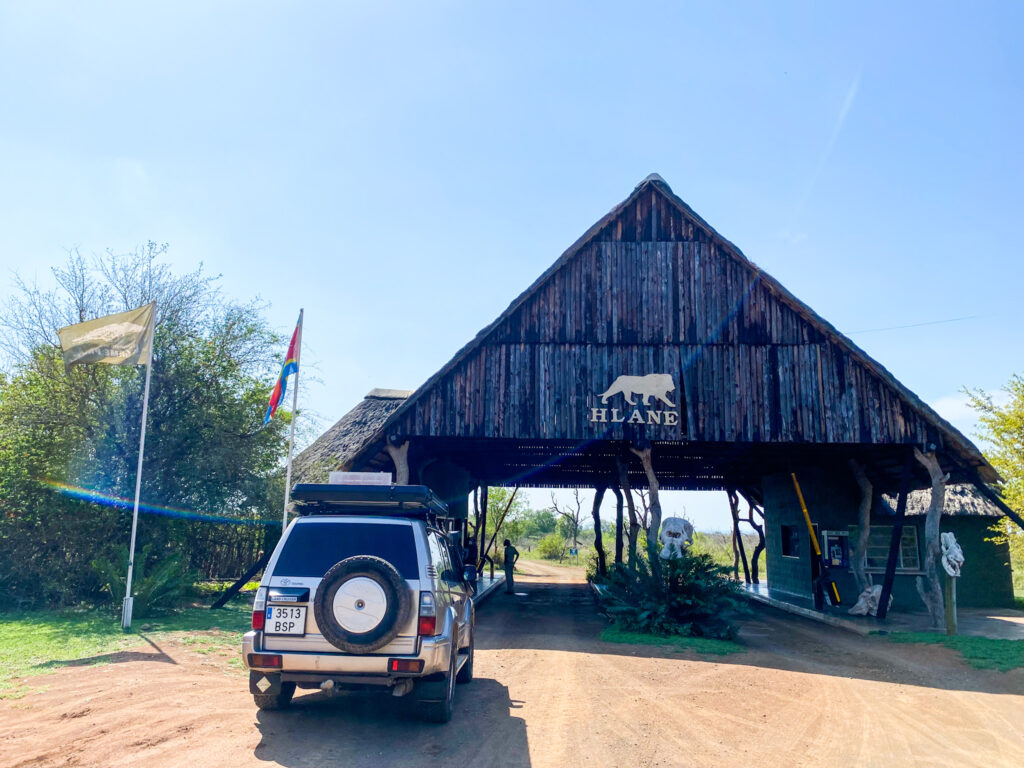


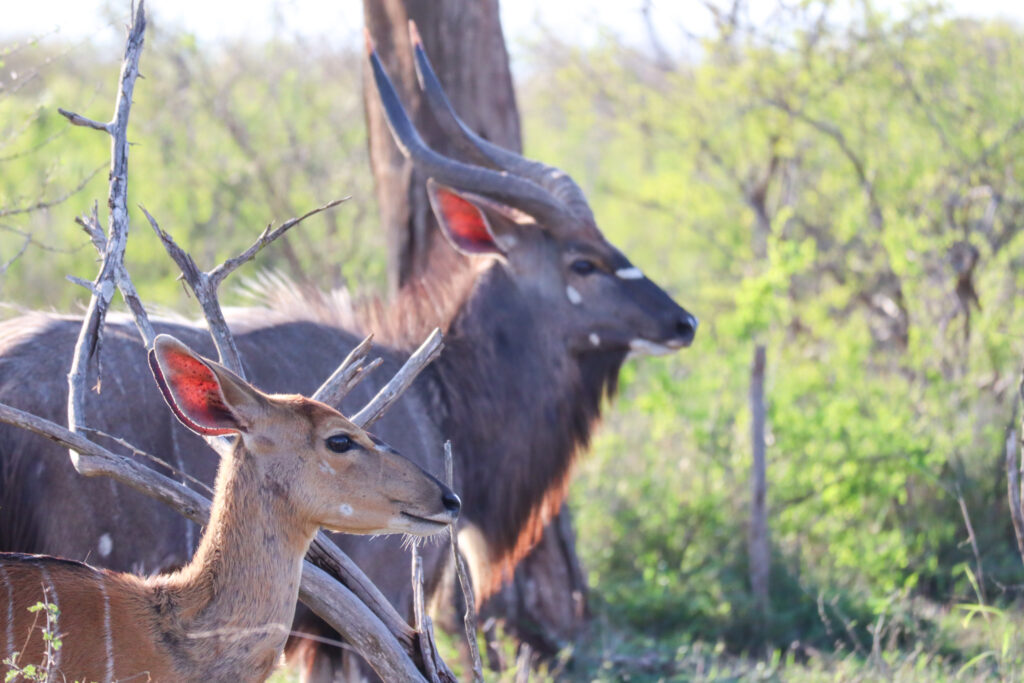

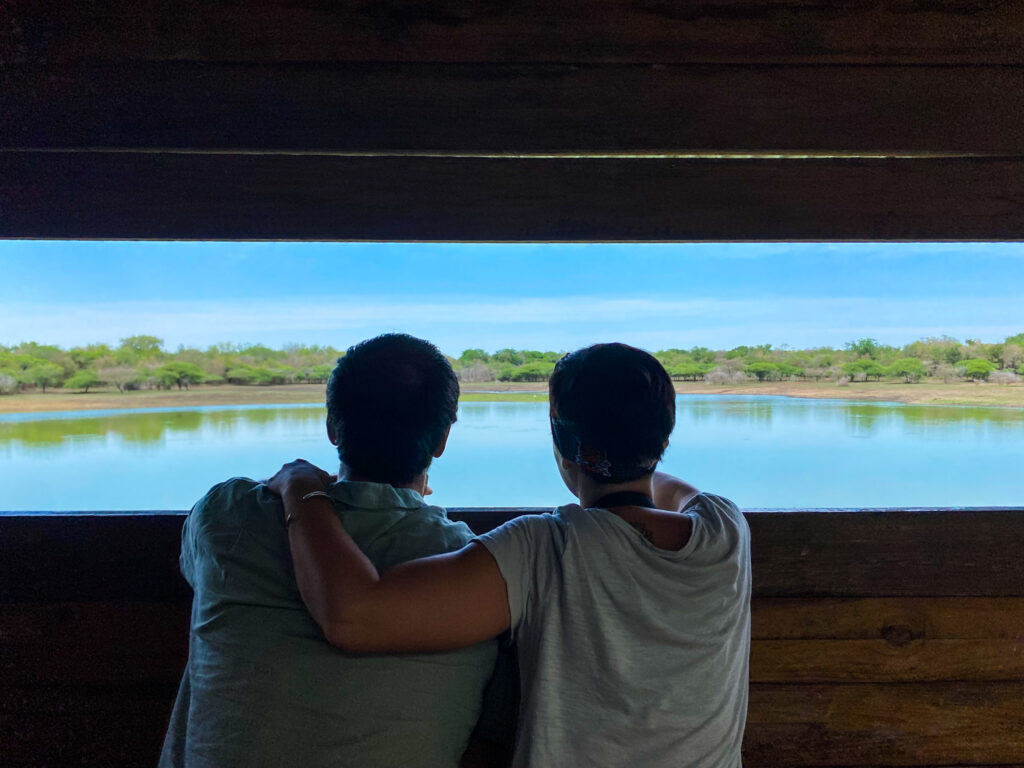
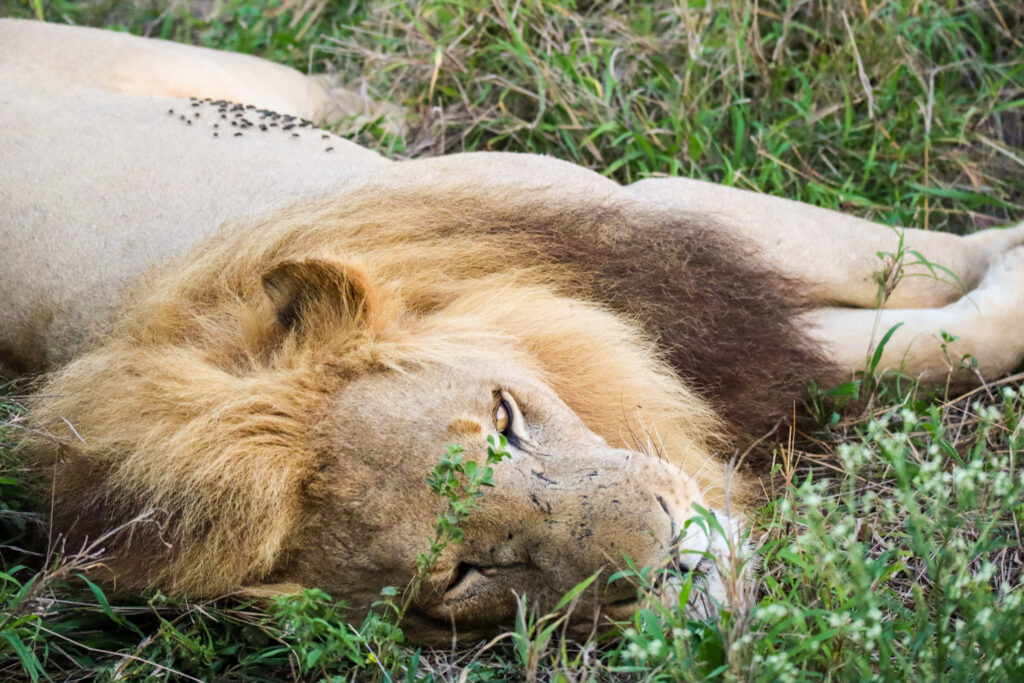




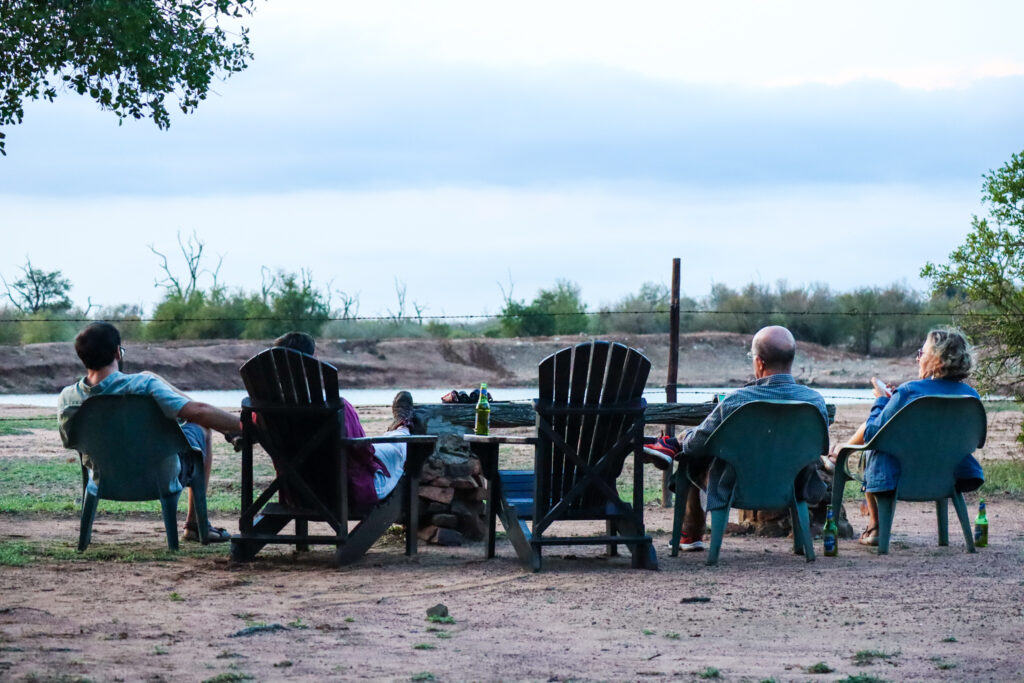
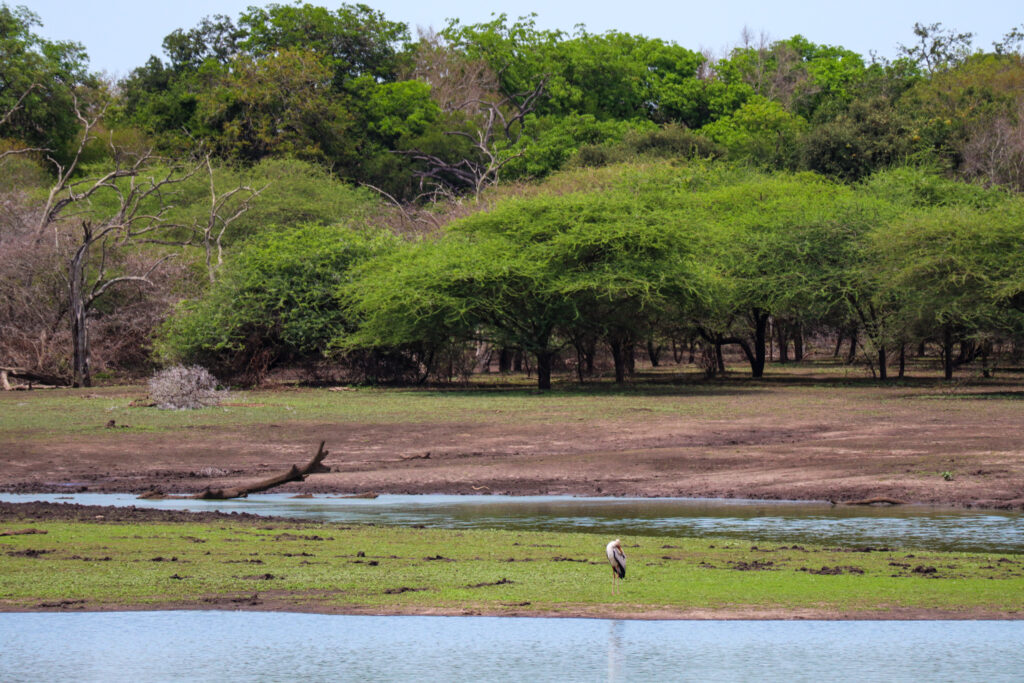

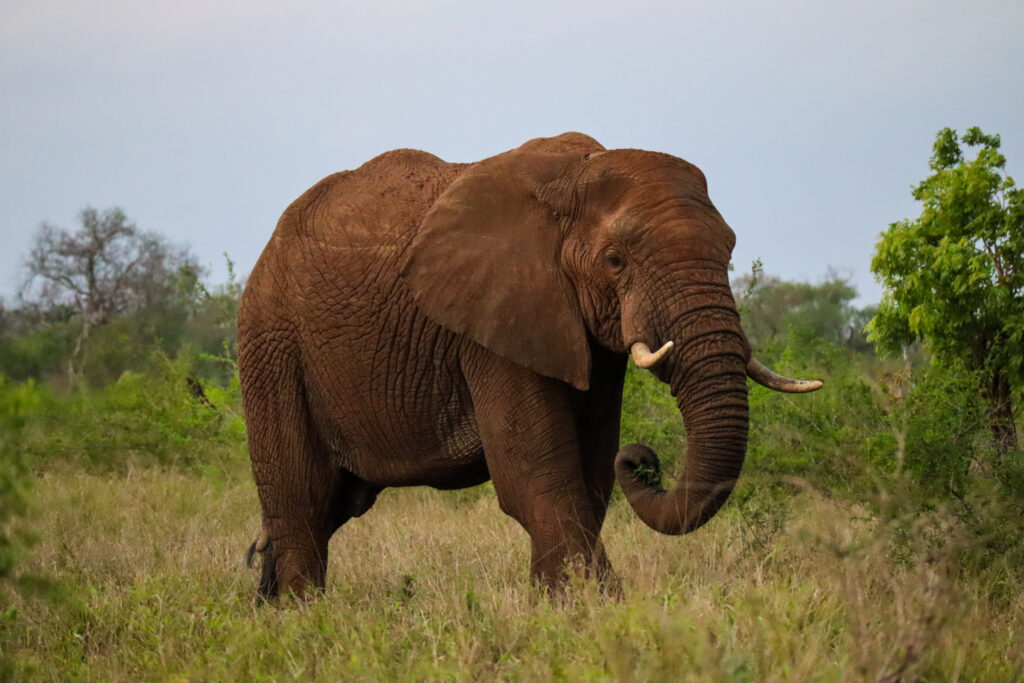







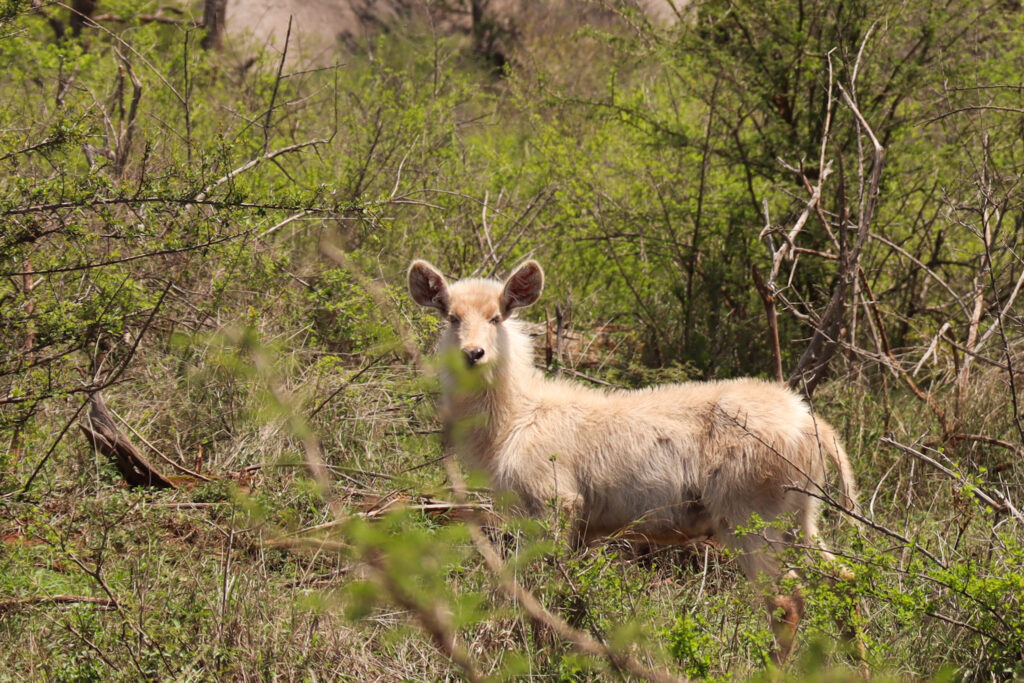

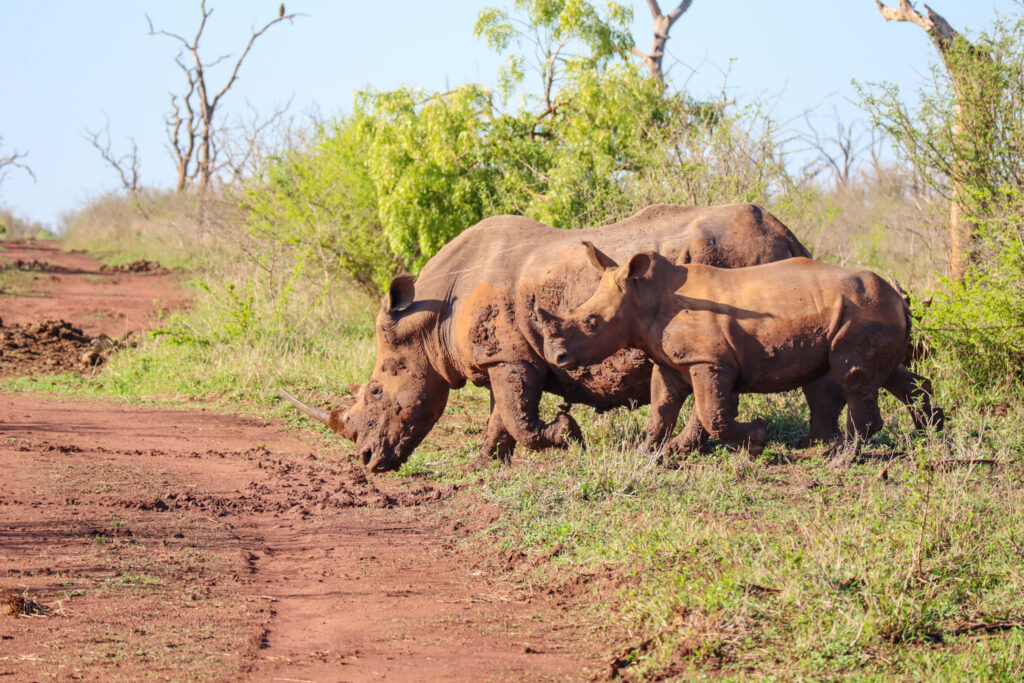


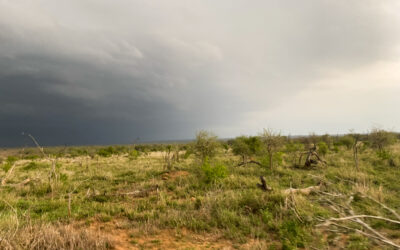

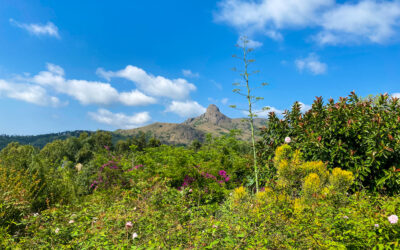


0 Comments